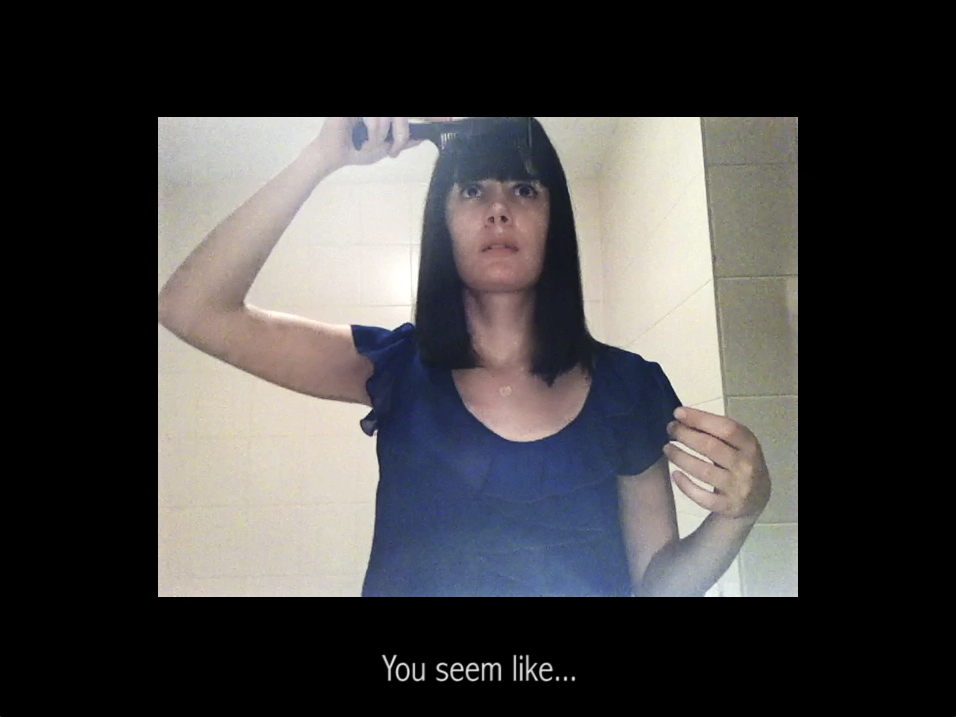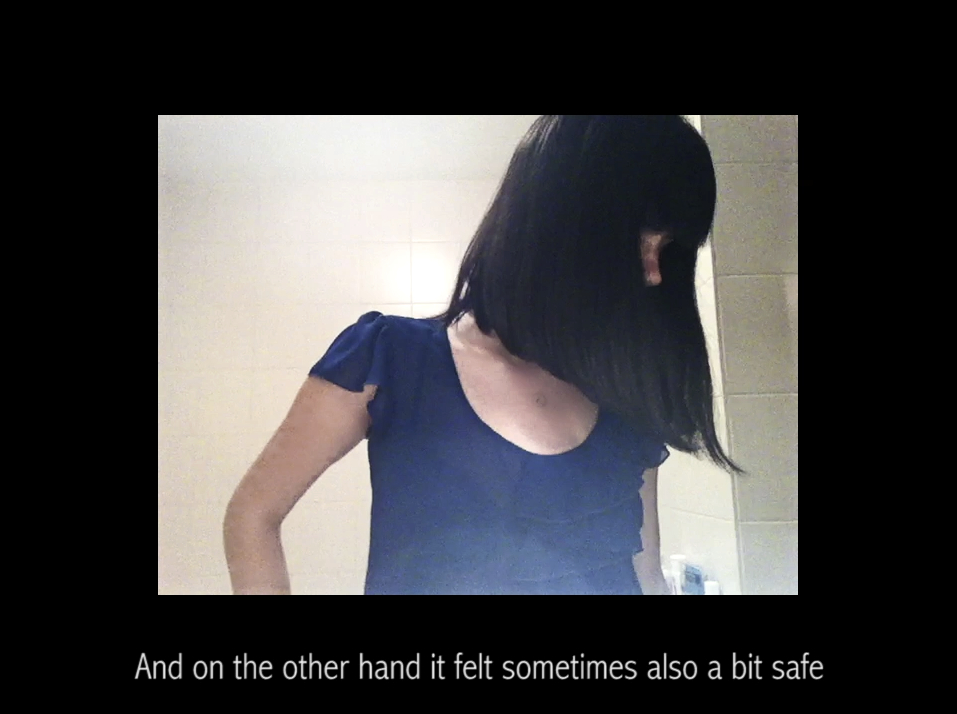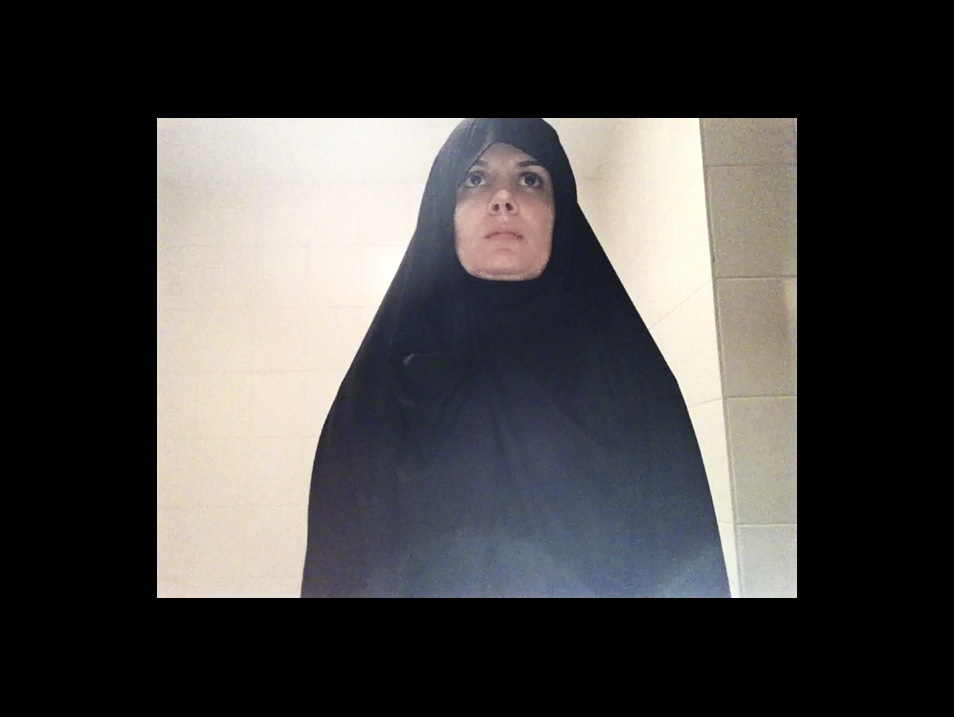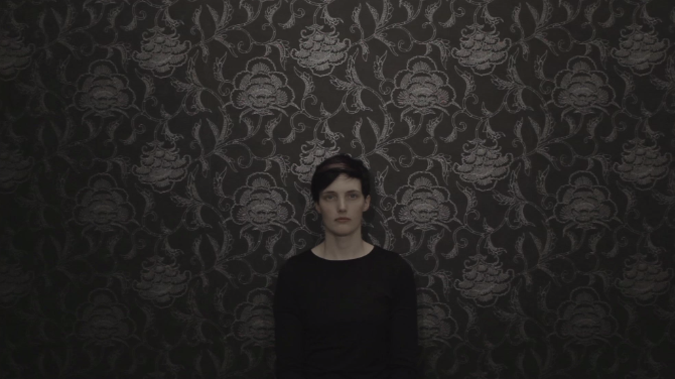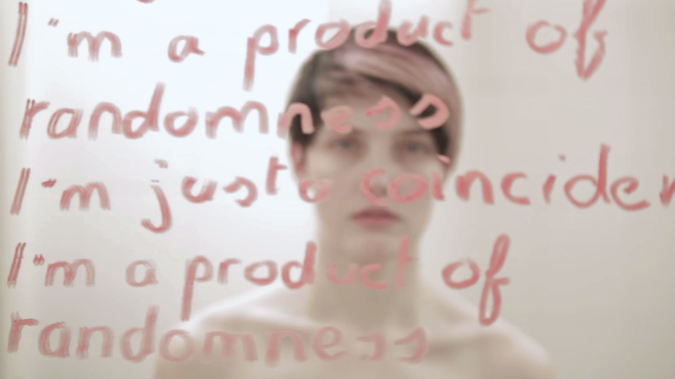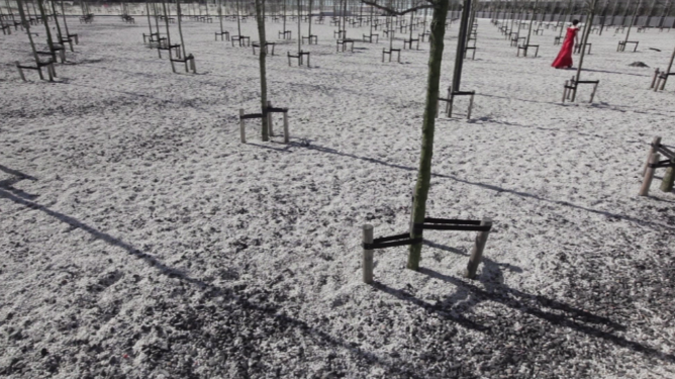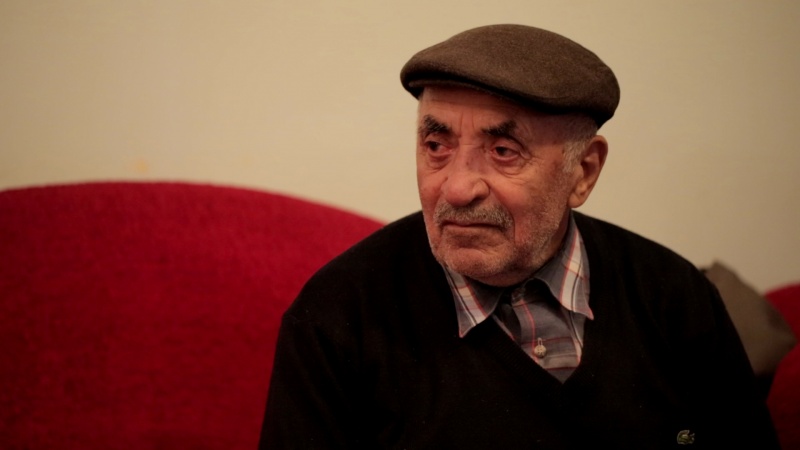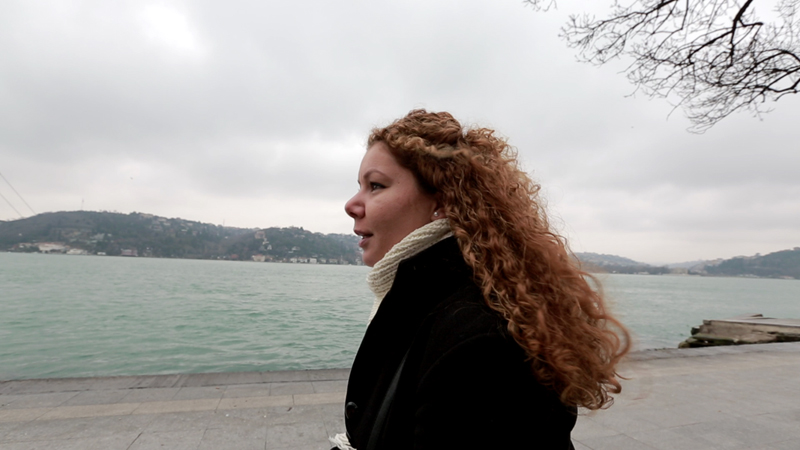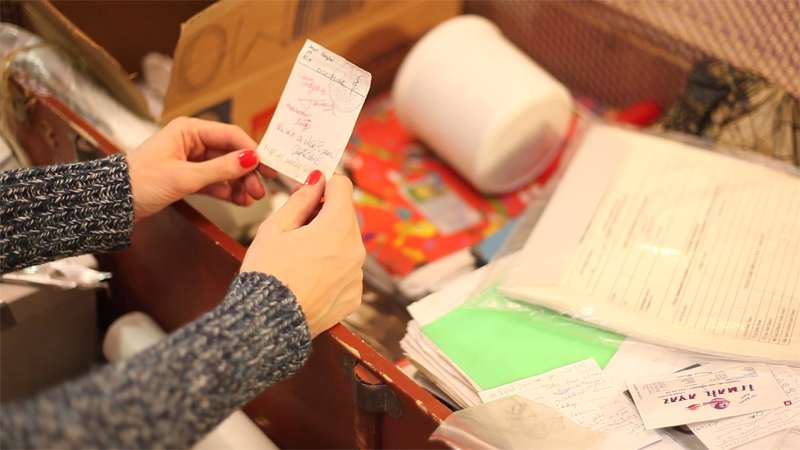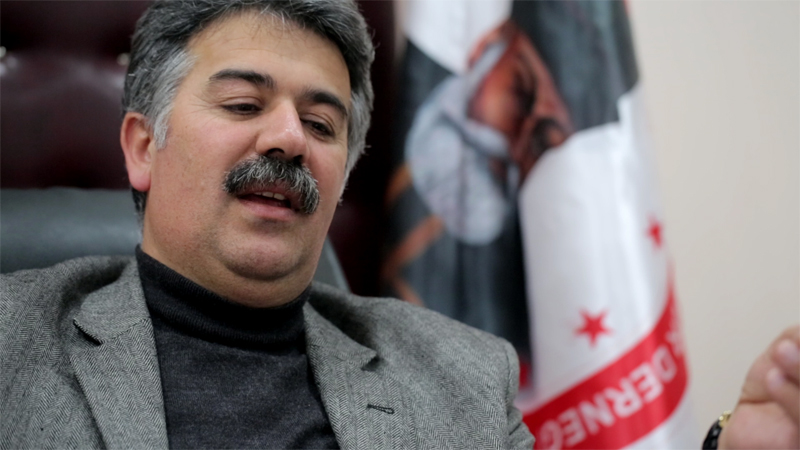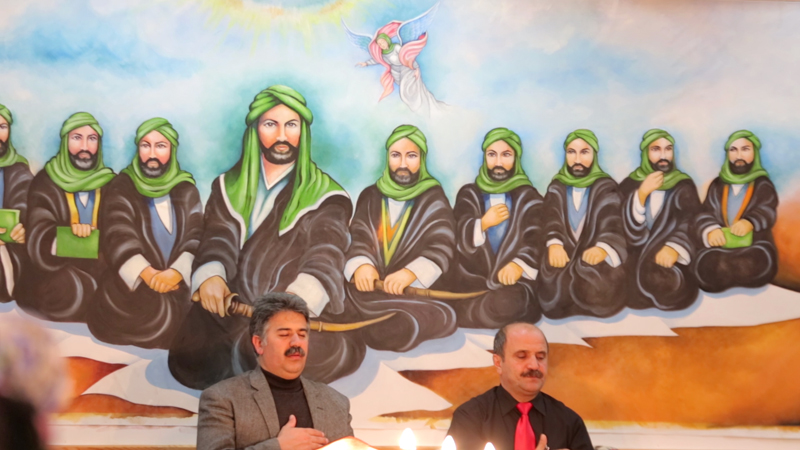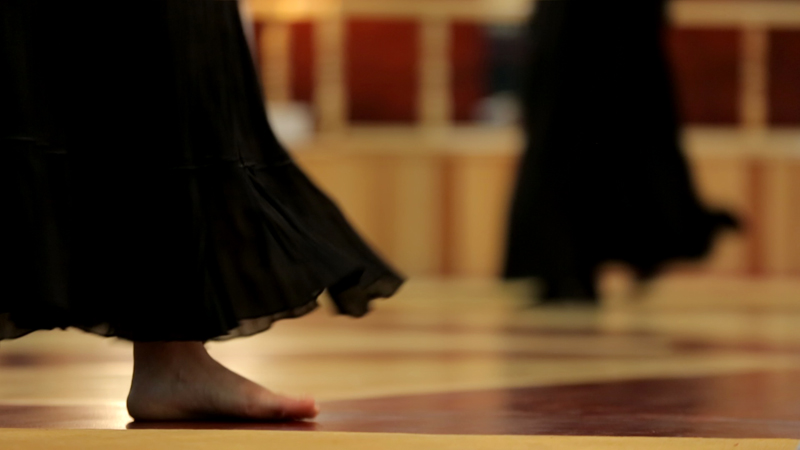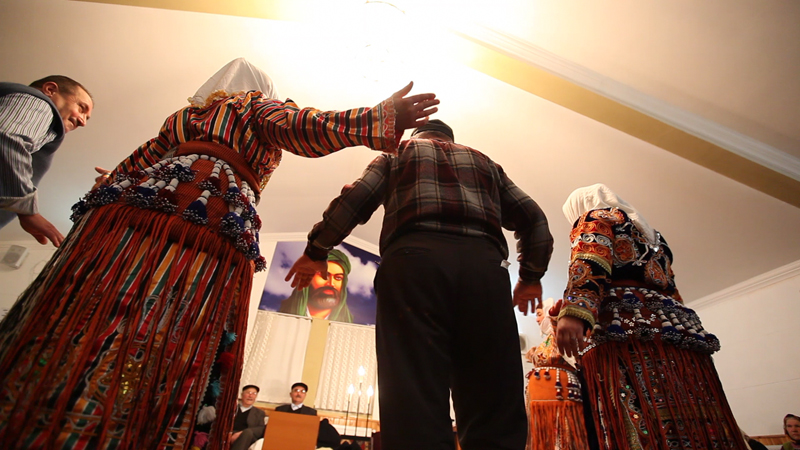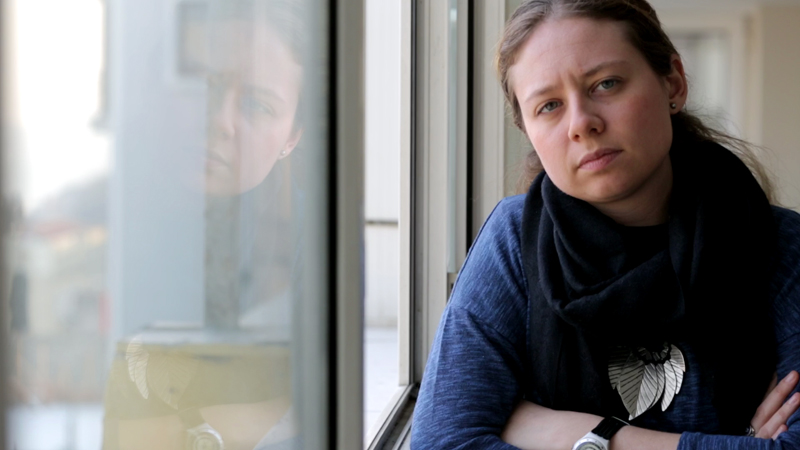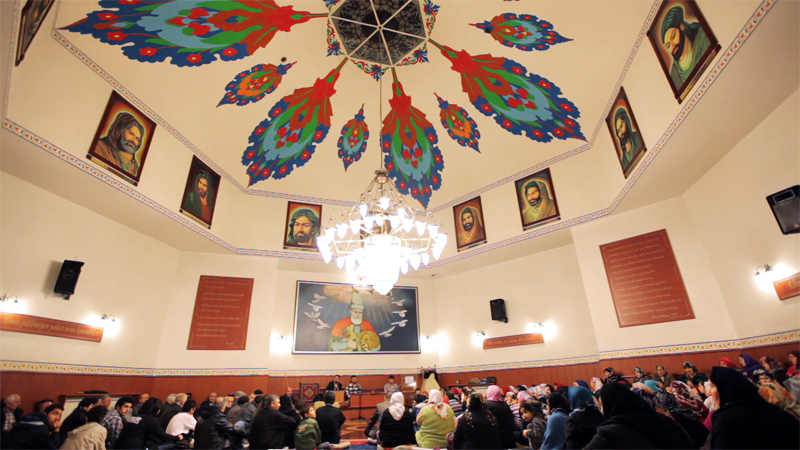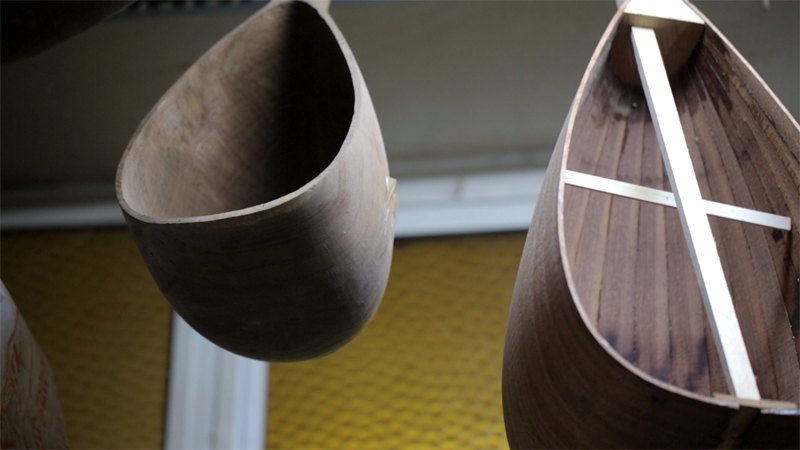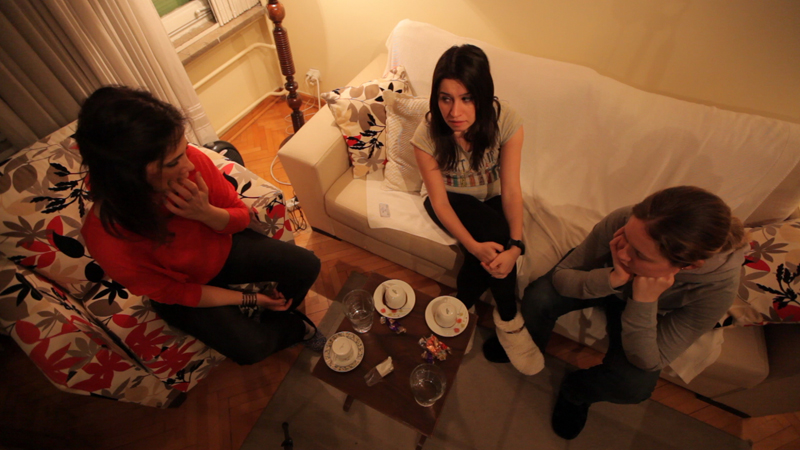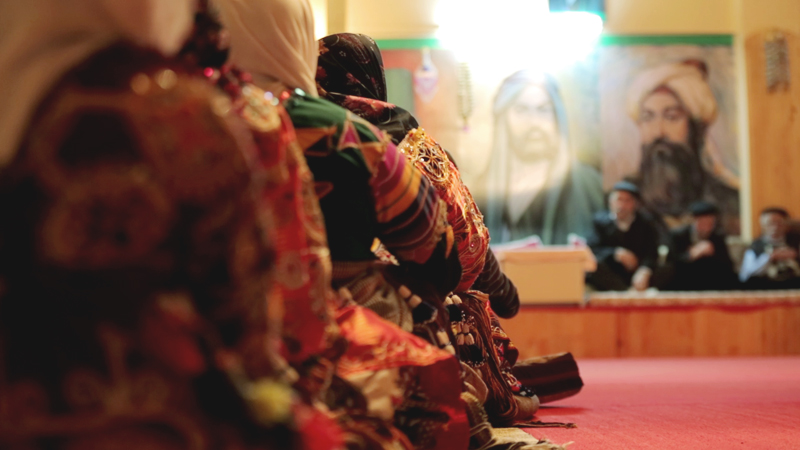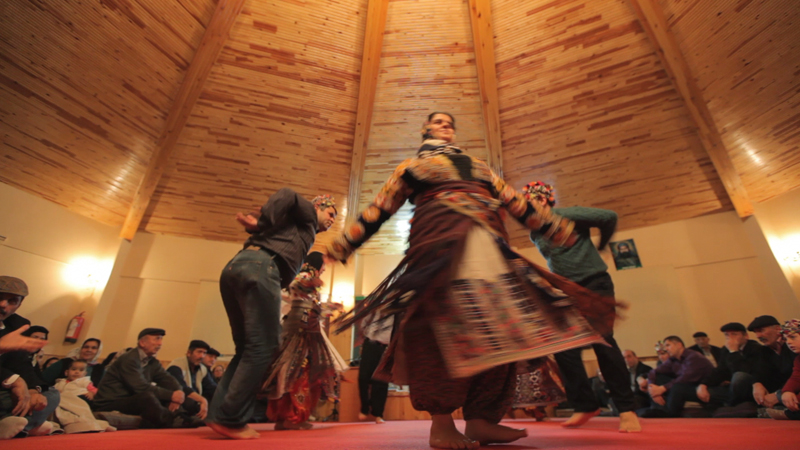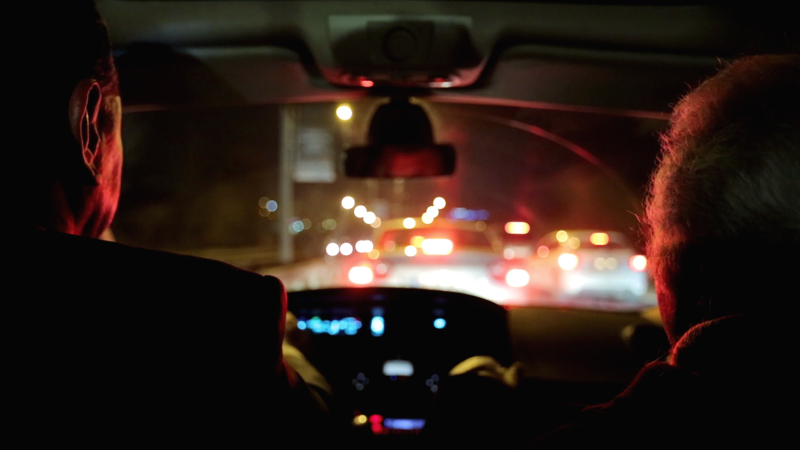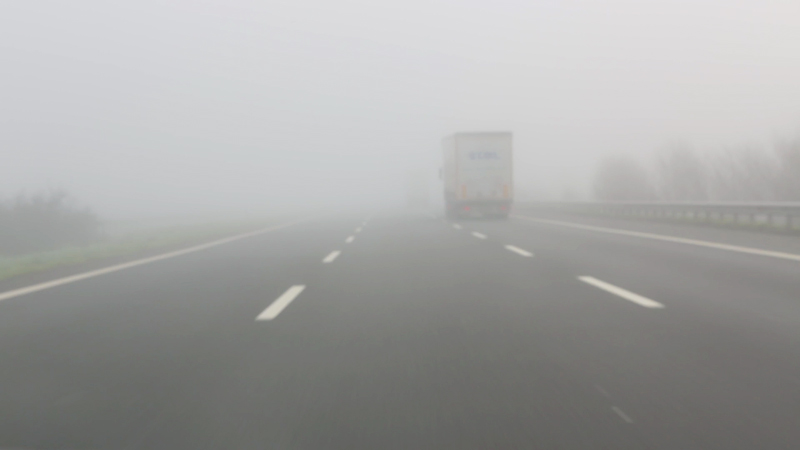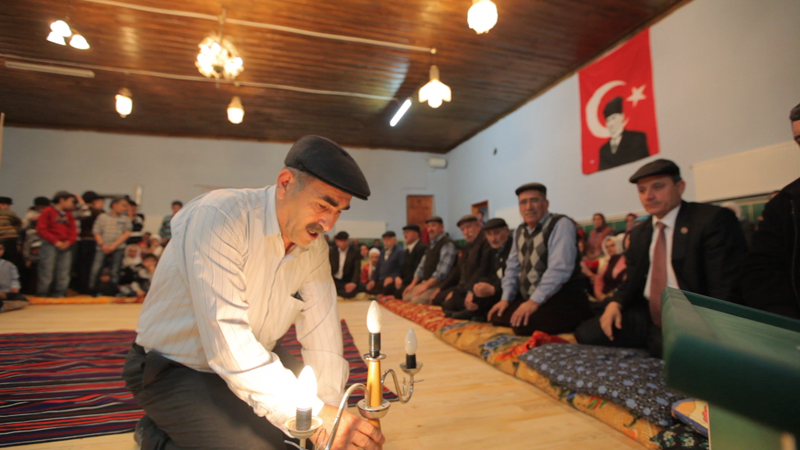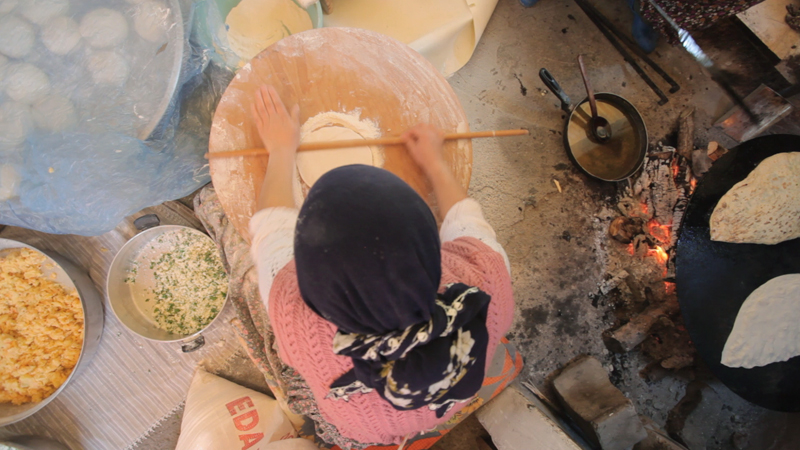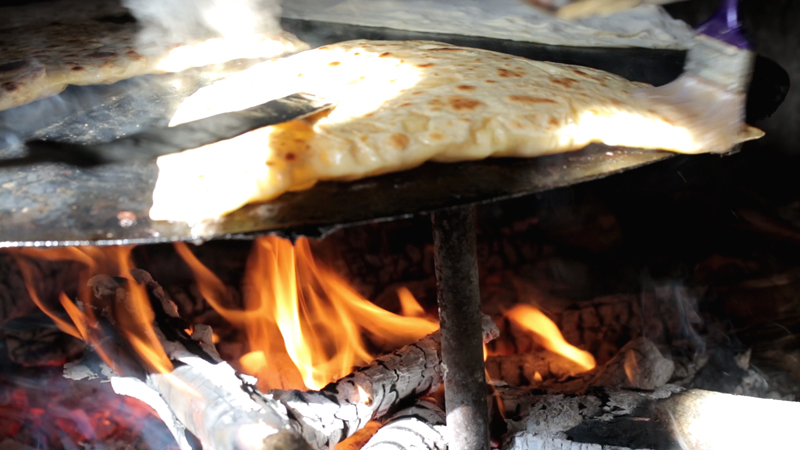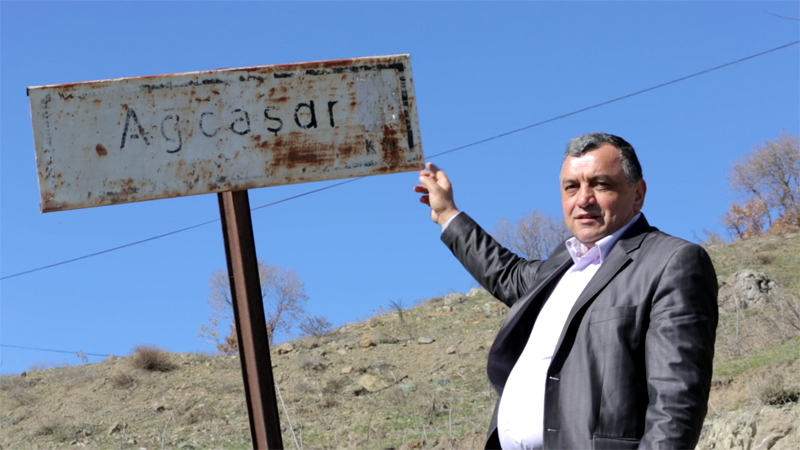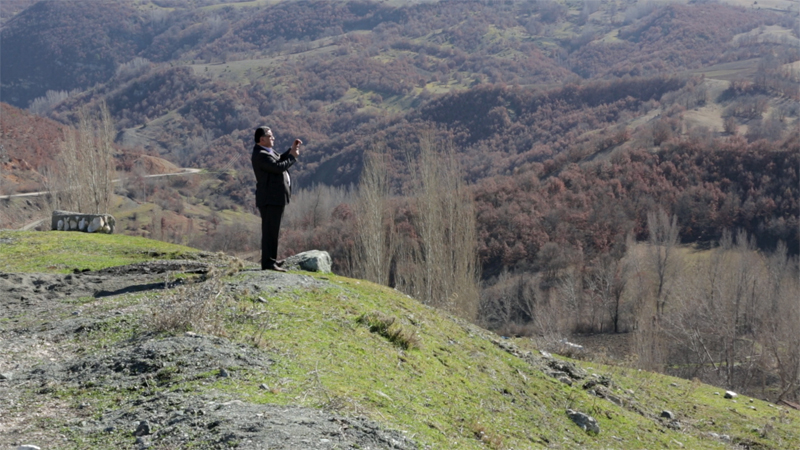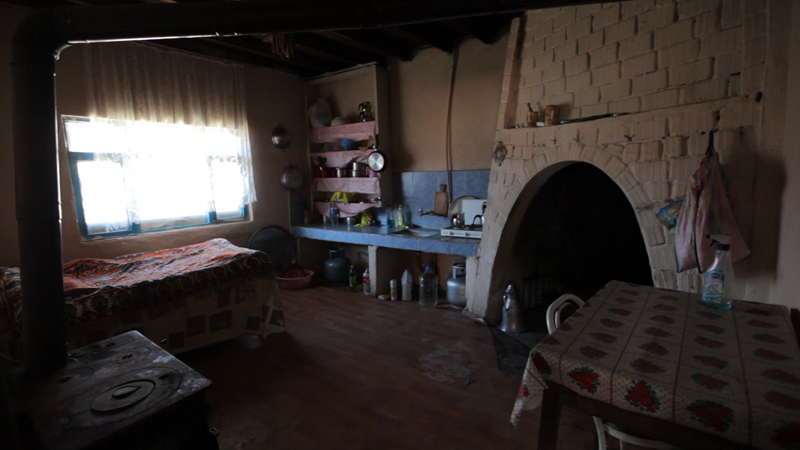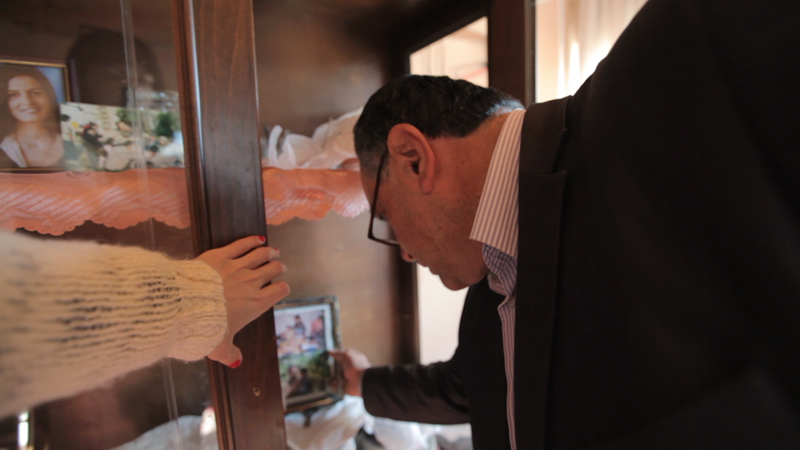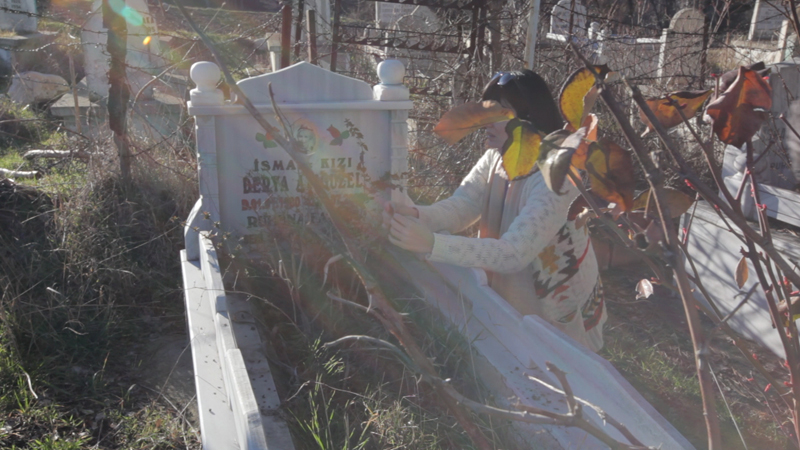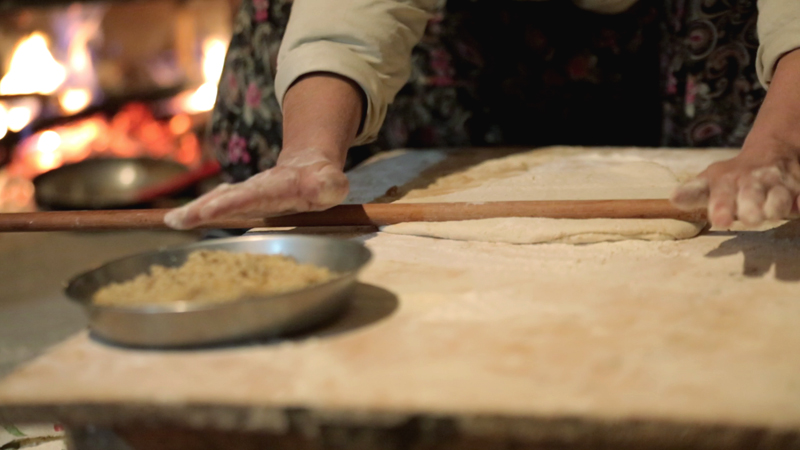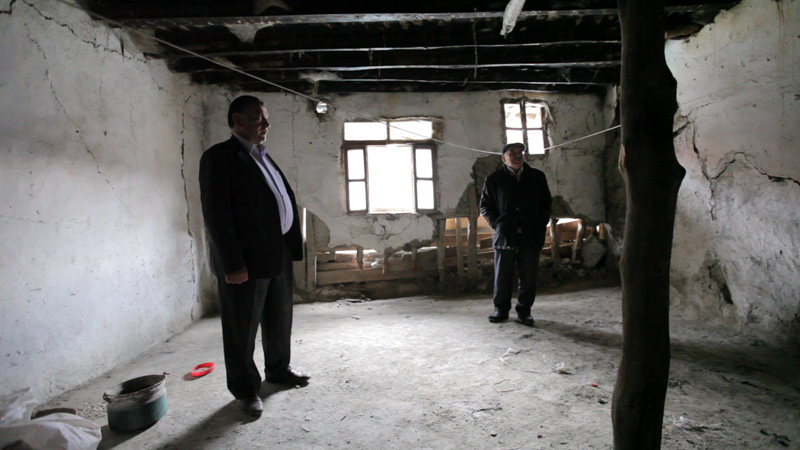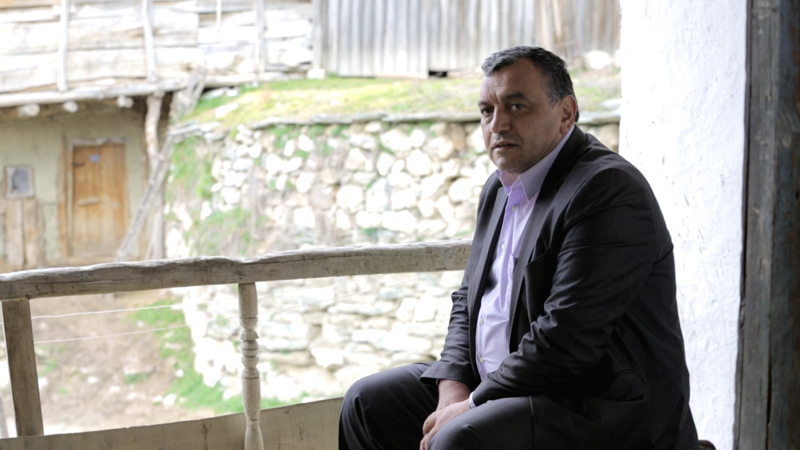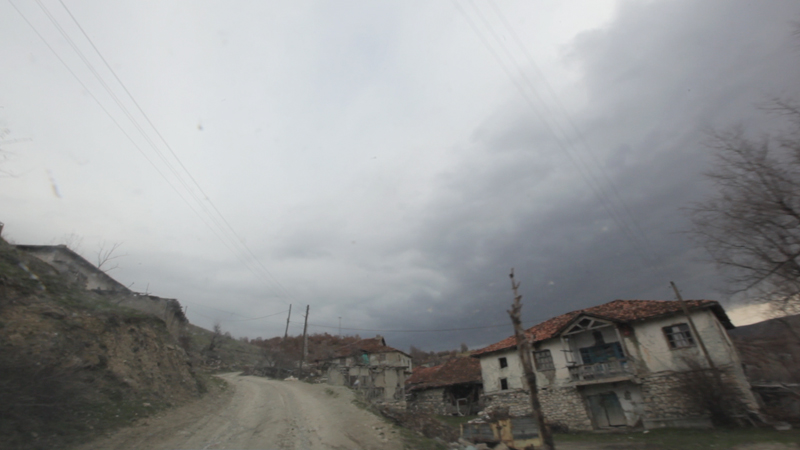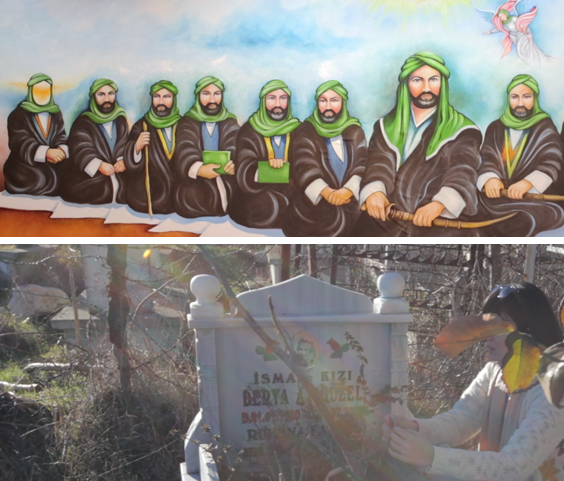User:Demet Adiguzel/Thesis Outline
THESIS OUTLINE
ABSTRACT
As it is hard to define oneself, it is even harder when one’s identity does not seem intact. By asking what forms an identity or to what extend it is rigid and when does it feel in flux; recently I am on the hunt for my cultural and spiritual self. I try to find where I stand with spirituality, religion and of course God. When I think of my religious background, it makes sense that I have this urge to figure out the ultimate single answer to my questions considering that I had to hide the fact that I was coming from a minority culture called Alevism and in a way mask it to fit the with the majority. This duality formed a skeptic and hybrid point of view as well as assimilation in the essence of things - something so in the middle that cannot be defined leaning to any side, as if it is being two opposite things at the same time. This exhausting action of being, in the end made me leave it be.
After years I moved to the Netherlands, I heard the prime minister said “May it be well for our country!” after Sivas Madimak trial – the monstrous act of hate crime towards Alevis – was prescribed deliberately to protect the criminals who burnt 35 people alive; something happened. I remembered who I was. Then I watched the videos of how they gathered as thousands in front of a building, with the sole goal burning it to the ground with the people in it. I know I became someone else in that moment, met someone I used to know after years.
This triggered me to question how much I can define myself as Alevi and what else I can define myself as. I had this sudden urge to embrace finally, what I was neglecting; so I wanted to begin searching with my roots and past, as well as this beautiful humanistic culture that shaped my way of understanding the universe – even though I put it aside, after researching on it I now see that I took a lot of the immanent philosophy and it became a member of my subconscious.
Therefore I dedicate this project to go after that instinct to revisit my past which shaped my identity with the experiences; to research on my background, what Alevism really means and what difficulties are set for this culture; to define my methodology which is mostly developed on my identity crises.
((Do we transform while we are trying to figure ourselves out?))
((How does time play a role in forming, shaping and changing the identity? The paradox of meeting with another identity when reading one’s old journals.))
Kalbe bir bıçak gibi giren hatıraların
dilsiz olduklarını anlıyorum.
Kar yağıyor
ve ben hatırlıyorum.
CHAPTER I
Introducing
I want to make a short film delving into my own experiences for cultural and religious identity, which raises questions about nationality, language, immigration, roles, freedom, gender, class and loss.
The recurring concepts of my previous works are identity, gender and religion. I am interested in questions like
▪ How do we construct our identity?
▪ How does it construct us?
▪ What defines identity?
▪ What's the role of memory when defining oneself?
I was an ‘other’ my whole life. Born into a minority, never felt belonging to any group, I could not grasp the shape of my identity. When I migrate to another country the feeling was more obvious.
Feeling lost and stateless, trying to find my identity; I ask these questions to myself.
Maybe knowing the answers would not help anything or give a way to explore it all.
For my graduation project, I want to explore what had construct my identity and made me me by the help of memories. Born into a small community with different religious beliefs than the majority, I had to hide my religious backgrounds from outside world to fit in. Living so many years undercover will be an element in my project. By exploring my memories, I aim to explore the culture I had to hide, the dominant outside culture and how religion played a role in my existence.
Relation to a larger context
The Stedelijk Museum Schiedam hosted an exhibition called In Welke Taal Zal Ik U Mijn Verhaal Vertellen (in which language shall I tell my story) in which the work of ten Turkish artists took place. The exhibition was devoted in themes like identity, origins, migration, changing social structures, perception of time as a measurable phenomenon and dreams of a better future.
In this exhibition especially the work of Seyit Battal Kurt took my attention since it was in the very format that I want to use in my project. It was a video installation of nearly 1 hour 15 minutes which I think was a little too long for a video installation, it may easily be a short film in a festival for the eyes who want to appreciate it fully - like mine. The installation “Qanok” was about Kurt’s story of going back to his home town which is a beautiful village in the eastern Turkey very close to the Armenian borders – was actually once inhabited by Armenians. While seeing these beautiful images, we hear his stories in three languages; he tells his memories in Turkish, his hopes and dreams in Kurdish and the transpiring events of the present in Dutch. In one sentence he uses also English to reveal his interest in animes.
He starts with explaining in Dutch how he wanted to make a film about his village but could not get permission from Turkish government since he has the Dutch passport. Then we are introduced with his memories of going to the Netherlands as a child. The images change from the great mountains of Turkey to coast of Netherlands.
In one scene we see school children of the village singing a song which made me literally cry, it was really touching for me but again it made me think if it was the same experience for everyone since as the viewer my punctum may be different than the Dutch couple in their fifties next to me. I was homesick, whereas they were having a window of another culture which seemed interesting to them in the comfort of their own country.
Mr Kurt’s sudden transitions of village and Dutch city life makes a strong contrast of the culture; you see the beautiful fields of yellow flowers where children are playing and singing on a sunny day changed into –almost interrupted by- the image of a dark bar where people seem more distant. He uses this technique couple of times, I almost think it’s overdoing it.
The landscapes are really brilliantly captured. However in some of the scenes I find myself thinking that these beautiful images should be captured in really high quality, to avoid that amateuristic look – yes I know that’s just me but when I think of my own project, I know I want it to have certain quality that differentiate it from any home video that was captured by any camera.
The cultural elements make the everyday life in a village make interesting visual tales; like making bread, sheepshearing, milking animals. Meanwhile we hear the sincerely told memories of the author.
I find this work very related to what I want to do. The way it handles the subject of migration and nostalgia is really close to what I wanted to do in my work. The languages play a role in setting the tone of in a way unfulfilled identity, the richness of a new formed culture. We see the way that this young man becomes and the longing to a simpler life of childhood in the background. Once he was somebody else, talking in a different language now he is in another world trying to reach his roots, “Where did our family come from?” he asks. We see his family all named with Turkish names talking Kurdish.
(((In the future, I plan to make an interview with Mr Kurt if and when he is available.)))
Relation to previous practice
Descriptions on the last 2 works
Mirror Mirror On The Wall
Mirror Mirror On The Wall, is a 7-and-a-half-minute long video starting with the 30 year old female subject in front of a bathroom mirror in a blue top, doing her morning routines such as combing her middle-length hair and her bangs, doing make-up, brushing teeth. It is almost like surveillance footage, in low quality, poor lighting and unflattering angle. The footage is in the middle, not covering the whole screen, it is rather small so there is a big black frame around it.
During the video we see the subject seem modern and ordinary, looking at the mirror and getting ready while the camera shoots her in front of the mirror slightly from below. Meanwhile we hear the audio of telephone-like conversations, which may not make sense at first. It starts with a female voice telling how she saw something and what it meant to her, so the opening line is “It was a black blanket for me…” then we hear male voices trying to define something black and supposedly a dress.
The video goes on with the same shot, with different parts of three conversations in which a female voice and two male voices try to define and explain how someone seemed during a specific day. Meanwhile the footage still show the subject getting ready until she slightly leans down and reaches for something that we do not see in the frame. Afterwards we see her covering herself in a hood little by little turning into a chador.
While she concludes her morning routine with covering herself up with a cloth that hides her hair, a fourth voice asks a question “Did you ever wonder what was under(neath) the outfit?”, the three voices one by one reply “No”. We see the subject not moving after covering herself, her last action being getting in the chador, now she does not go further with getting prepeared; just looks at the mirror, then looks down.
The footage was shot by an iPhone 4 camera using natural light and was edited in a way to give a certain surveillance feel. The audio was taken from the conversations that were done with my class-mates as interviews on how they felt and found my appearance in class as a woman in a chador (as opposed to my normal self). During these conversations I asked them certain questions aiming to answer the question if they had felt anything different about me when they saw me wearing a chador, if they knew what that type of garment is used for. While editing I tried not to give away the subject of the interview till the end and tried to keep the suspense till I got in the chador in the footage.
For this video I spent several days in an outfit which I would not normally wear and obviously states the beliefs of the person who wears it. I wanted to see how I would feel in it and how would people react to me, to see if anything would change in the way people treat me. I came to class wearing the outfit and in the video, I included the interviews that I had made with the people I see almost everyday; my classmates.
In this video the interviews are revealed while the visuals show myself doing my morning routines in front of a bathroom mirror and then getting in the chador as an obvious transformation into another identity. I wanted it to be apparent that there is an absolute transformation with a simple piece of cloth and also emphasized it with the pieces from the interviews. I think I succeeded for this aim.
I also think that in terms of telling a story with the help of audio and images, this piece has a significant success. To compose the audio and video in order to tell a story, to combine them in a way that it starts with a suspense and ending with revealing the answers was my aim. For the audio, since the actual story is told by others, when it is combined with the images of myself, it makes it more interesting to watch.
In my opinion, the work could be more interesting if there were more conversations – more voices therefore (and hopefully) more interesting opinions and findings about the experiment I had in the outfit. As an alternative, the footage could be shorter so that the conversations can be more frequent.
In general I find this piece a good example of how the audio and image in my work can work together.
The Absence
The Absence is 3 minutes 34 seconds of moving images looping as two screen installation. Totally silent videos start with almost abstract images. On the left hand side the screen is white and on the right hand side is gray. Both screens move and within the same shot there appears a brunette female in her twenties looking out the window which suggests that the abstract beginning scene was snow flakes floating out the window. Meanwhile the abstract bubbles in the right scene became clearer suggesting that it is surface of water being poured into a tub. When the scene slowly moves we see a foot appearing in the right screen while the left screen starts to show the female’s hand.
While the left screen changes to black blank screen, the female appears in a close up shot sleeping in the right one. In the next shot both of the screens we see the female staring at the camera with icy blue eyes. In the left screen she appears from her chest up, we see her shoulders naked. While she stares at the camera with a blank look, we also see some writings in front of her as if they were written on a mirror which she looks through to the camera. Slowly the focus of the camera changes to the writings and the female becomes blurred. Meanwhile on the right screen she appears in front of a black wallpaper with a pattern of gray flowers on it. She does not move. Both screens turn to black blank screens at the same time.
From week 6 till week 13, we have shot every weekend (with the exception of one weekend) once or twice. Some of the intended scenes could not be shot because of the time constraint – simply because of the season. For some of the scenes, the image was edited with special effects by the help of After Effects program. The general editing was done in Adobe Premiere. For all shoots Canon 5D Mk II camera was used.
In most of the scenes we see the reality shift, the viewer cannot be sure if it is real or just imagination. The reason I wanted to use two screens was that I wanted to give realities as different layers which are interactive with each other in a way. For instance; the opening scenes start with almost abstract images later composed to show the character. In left scene we start with her face and when we see her hand, the other screen reveals her foot slowly. We see the contrast of her beautiful face by her graceful being and brutally damaged (dancer) foot in water.
For most of my work I use symbols but try to avoid explaining everything by allegories. The certain elements of fairytales and their religious representations impress me. This work includes allusions to certain fairytales but more importantly, to religions.
In this work, I still am not satisfied with the outcome. During the shooting, I have thought of every scene and what they might mean. However even though the shooting was thoroughly done, there was not enough time to do the editing in the same manner. Therefore, I still see this work as a work-in-progress and try to work on it from time to time.
Since I am now exercising on the story telling with the images, I have re-edited this footage in order to tell a more concrete story and tried to only include the important symbols and scenes in one screen. That is because I think this piece is not too strong in telling the back story and since I (over)used the black blank screen in this piece, I think it prevents the audience to include themselves in the story.
I worked on a way to use the strength of the images to grasp the attention and curiosity of the audience.
On the other hand, I also made experiments to see the possibilities to intensify the images with audio. I have written text which I think made the end piece more meaningful. I have also used audio from a music box to give the relation to dreams and sleeping.
I know the end piece has this feel of a music video (as was expressed by some viewers) since the beauty of the images, however I am positive that it had became more meaningful when compared to the silent double screen version.
CHAPTER II
Discovering the Background : What is Alevism?
(Annotations from the books I am reading)
(Should also include a list of definitions of terms that are related to Alevism)
From author L. Kaleli’s Binbir Cicek Mozaigi ALEVILIK (Fusion of myriad blossoms ALEVISM), one of his many books on Alevism, a short description of Alevism is as follows:
Is Anatolian Alevism a traditional culture, universal philosophical approach and just a life-style? Or nothing but a belief system? Or something incorporating all of these? The common opinion is that, Alevism is a belief system that defines itself inside Islam with God-Muhammed-Ali trinity while focusing on Marifet (enlightenment), ethics and improving oneself with humanistic values and wisdom; a philosophical view and a life-style embracing humanity with a tolerant perspective without making any discrimination on beliefs, nations and sects. A Sufistic belief system based on rather than the written traditions, mostly on oral discourse where throughout centuries it manifests its true voice in the spiritual songs of Folk poets such as thirteenth century humanist mystic poet Yunus Emre:
God is our professor and love is our academy.
Let us love, and be loved.
or
There is an I in me,
Deeper than me,
Whose eyes look at me
From inside of me
Or one of the most influential figures in Alevi history; humanist, philosopher Haci Bektas Veli’s following aphorism can contribute to summarize the essence of this ideology
You look for Kaaba, Kaaba is in you
The word Alevi is coming from supporter of Ali. Shia section is also coming from the same origin, meaning supporter of Ali. However the supporting of St. Ali in Iran is different than Anatolian Alevism.
Four Gates Four Levels:
- seriat – the rules that lead you to enlightenment. It is structural, keen on Quran and closed to change
- tarikat – the people that lead you to enlightenment
- marifet – what you sense with knowledge and reaching God with perceiving
- hakikat – the truth where one reaches the Godness, dissolving in God in space and time
In this philosophy the crucial is what they call the Truth which one should live to reach.
Notes to work on
- Some believe in Quran, some believe that it was modified according to the needs of the dominant prosperous group after the death of St. Muhammed. As I see many different opinions on what Alevism is and how it may vary from region to region in carrying out the rituals, now I can define myself as a member of a culture that cannot rigidly define itself but one thing for sure is that the essence of it is *humanism*
- All these years I thought that I was not coming from Islam; the majority sect in Islam seemed so different to me that I thought I could not possibly believe in the same thing that they did. Or I as a believer found myself thrown out of the Islam altogether because I was not believing in something that the majority did. I founded my own system in which I believed that God was not a single, separate entity but was simply Love or one's own conscious. That makes sense now when I think of the essence of Alevism.
- Alevilik Bildirgesi (Manifesto of Alevism) 1989
- Enel Hakk : I am God/I feel God -> reaching God in oneself. Hallac-i Mansur was killed because of this statement since Sunni sect of Islam considers this sort of statements a big sin.
- Common known slanders on Alevism -> Mum Sondu (Blowing of candle) : (start with Since in Alevi culture there is not discrimination between genders so they pray and have their rituals side by side.)
CHAPTER III
Revisiting : The Image Journal of the Journey
January 26
Interview with my grandfather
The night I arrived in Istanbul, my grandfather was staying at my parents’ house.
After my grandmother passed away in 2008, he tried to live in their own house in a small village in Tokat – a city in northern Turkey. However after some time my father and uncles found out that he had a concussion supposedly from a fall. He had brain injury so had surgery which after he recovered well but had some issues with remembering. Now he is disoriented most of the time and not in any condition to live in his own. He fathered six sons including my oldest uncle we lost in a car accident in 1988. My father and other four uncles decided to look after grandpa in their houses taking turns every month.
My very disoriented grandpa is now very different from the strong man I used to know. In our family not being sentimental and not showing emotions is a virtue; he used to be a good follower of this rule. Now he seems more in touch with his inner self and shows more emotion, sometimes humor himself for not remembering things. He treats me friendly yet most probably he does not know who I am but I think he has a sense of how he used to feel about me. So I can say that he remembers not with his brain but maybe with his heart.
Sometimes when we ask, he remembers a certain detail from years ago vividly when he has a certain feeling about it. I ask him about his grandmother since even though she had lived way before I was born, I feel strongly about her because as far as I know she was an extraordinary, strong woman character of her time. He confirms.
Then comes my mother with a cake since 25th was mine, 7th was my sisters and 1st was her birthday and we were reunited after months we celebrate all together, grateful for being together – remembering or not.
Interviewing with my grandpa is going to be the starting of a new series I want to work on. For this I will be conducting interviews with elderly people and ask them about their memories and film them.
January 28
Interview with my cousin
Gül’s and my grandfather are cousins; so four generations ago we were that extraordinary and strong great-great-grandmother.
We knew each other from cribs and from age of 7 till 24 we lived in the same neighborhood, as a result we are pretty close friends too. She has a strong personality; dominant and logical. We met each other for a traditional Turkish breakfast near our old neighborhood in a restaurant we used to go a lot. I started filming there with the breakfast and as we spend the day together, the camera kept rolling. We talked about everyday issues like dieting and quitting smoking. I also interviewed her about being an Alevi and if/how it affected her life. We had a nice chat about what she knows about our culture, what she likes and dislikes about it.
When I ask her “Are you an Alevi?”, she replies “I am… I guess.” She confesses that she is not well equipped with the knowledge about our culture. She knows the essence of it but wants to define herself as Deist as she does not follow any rule of any religion but believes in God in her own way.
I also ask her about the difficulties she faced growing up and she tells a similar story to mine. She talks about first coming out and revealing her background. The first time she told her friends one of them reacted disgusted and told Gül that she knows that Alevis have incent sexual relationships. (She talks about the great lie called “blowing off the candles”) Gül says after this incident, revealing her identity becomes a method of filtering the less enlightened or ignorant ones that she cannot have friendships with. For me this seems in a way fortunate when compared to mine, because in my story; I heard a rather close friend talk about this lie – that Alevis get together and then turn of the lights and then have an orgy – or – that Alevis have sex with their fathers – and when I asked her how she knew she replied smugly that she heard it from her mother who knew everything right. So there was no arguing with her, she totally believed that lie and I was only 12. I could not tell any of my friends after that incident, fearing that they would judge me with such accusations.
During the interview Gül asks me “What do you feel yourself as?” trying to learn how I define myself; I reply “I can say that because I can’t clear up what I feel myself as, I do this project.”
It is very easy to understand each other when standing on the same ground, I understand. We talked till 01:00am.
January 29
Opening the chest
A walk on the memory lane.
When I left for Rotterdam seven years ago, I left things I kept as souvenirs in a chest to my parents’ house and not till that day I opened it.
As we carried the super heavy thing from the remote place that it was waiting for me, I thought to myself “what on earth is in there?”
Before I opened it, I placed one camera to my right with a rather wide angle run by sister, another one on my left in the hands of my brother with a tele lens for really close-up shots. So I had two different angles.
The filming starts with the exterior of the chest showing how old it looks and then both cameras show the first time it is opened by my hands. It pretty much goes on with me by diving into the chest object by object, reading things sometimes reacting to them while facing the memories.
I remember.
But mostly I remember how important it was for me to remember.
The first set of photos I took when I was in first grade with the simplest camera that my father got me, are in a red hard-covered album.
The letters that I received from people I see frequently.
Journals journals journals.
Cigarettes I smoked and saved the last bit in their boxes.
Notebooks notebooks notebooks full of short stories, poems, essays, class-notes.
A Frisbee.
Photos of our old house before it was torn down.
Father’s shoulder loops.
The messages that we wrote to each other during classes – a time of no SMS.
Tickets from movies, concerts…
Folders.
Report-cards.
A cheap copy of Satanic Verses.
More photos.
Newspaper pieces.
Crayons.
Cover of Cher’s cassette.
Post-cards.
Never developed photo films.
Yearbooks – even before my time.
A burst balloon.
Term homeworks/projects that have 5 stars.
More written material.
More more more.
Over an hour and a half footage – and I could not checked everything.
Seeing someone through a key-hole in my mind. Is that me?
I seriously want to build a sculpture with everything that came out of that chest that day. But first I have to find a way to archive them.
(TALK ABOUT THIS SPECIFIC ITEM)
January 31
Interview & Cem (Meeting) Ritual
February 2
Another type of Cem (Meeting) Ritual
February 06
Interview with my friend at our school
February 07
Another Cem (Meeting) Ritual
February 09
The Atelier and making of the sacred instrument Baglama
February 10
Interviewing friends
February 11
Another Cem ritual
February 12
Interview with the author Lutfi Kaleli
February 13
Going to "the Source" (a village in Anatolia)
11 hours of journey
A Cem ritual in a village in Anatolia - Tokat, Turhal, Cayli village to be exact
February 14
A spring-like morning in the hospitable village Cayli with the smell of delicious Gozleme
Going to our village Agcasar after years
Grandma's abandoned place - still full of memories
The graveyard or facing the fear of seeing them as stones
Hospitality of some relatives
February 15
Interviewing my father in the house he was born
Back on the road to return to Istanbul
CHAPTER IV
Forming
The Photographer's "second sight" does not consist in "seeing" but in being there. Pg47
Since the rituals were held in specific dates, there was only a small window that I could film these rituals in which I made my schedules accordingly. Therefore for the three weeks I was there my plan was to film as much as possible and to make a meaningful piece out of the material that I would have. That also meant spending everyday with the camera, looking everything that I once just neglected in a new way. As a result I ended up rediscovering that a camera can become a limb that can shape your own point of view in ways that you would not even imagine.
Naturally, the recordings slowly formed a story of the three week journey in which the images not just narrate the time they were shot but also reveal the stories behind the stories – the stories I was there for in the first place.
The images were shot with a planned intuition. I was there knowing what to shoot and how it would add up to the story but I was also open to the element of surprise and almost searching for it. Everything, every decision I made, specific paths I took was making sense in the end, when I analyzed them I could understand why and how they should be that way. There I was enjoying the freedom of including everything while in fact just obeying the superior director inside of me that calling the shots without me realizing it. I understood that after recovering from the shock of grasping how long the footages actually were.
After I returned with all the material, once I got over the fact that I had hours of footage waiting to be analyzed and indexed, I immediately started to think of the ways to combine them in a way that they tell the story I want to make.
Of course there are couple of things that I need to be sure of, couple of questions I need to be able to not just know but sense the answers to.
- What do I want to say?
- From the material I have, what is important and what can tell what I want to say?
- What is the main theme
- The levels that complete the theme
- Who is my audience? What is the form of the piece?
- What kind of a language do I want to create and use?
- How can I achieve the language that I want to use?
- What is the backbone of the piece & storytelling?
- How is the rhythm formed?
As I see, not only the shooting of the piece and most probably the format of the piece is based on taking the journey but the forming of the piece is also a journey in which I discover ways to tell a story, to make the audience relate to what they are seeing and my own language and voice.
Rules :
As the starting point of my project is identity and the feeling lack of a solid identity because of being in disguise; my choice of not showing my face in the piece gets another meaning. The facelessness in a way becomes the very way to figuratively highlight the lack of feeling of belonging. Although the story is personal and is about me, I want it to state that it may also be so generic of a story, a faceless body can become so anonymous; by focusing on a person’s point of view and experiences anyone can fill their faces in where there is the blank of a face in the story. Not putting the face can create commonness and create empathy.
I like this rule also because it reminds me of the last of the Twelve Imams in Alevism who is always depicted faceless, since he was lost when he was four years old and it is believed that will return.
The only image that show me as a body rather than an eye behind the camera was shot as a backbone of the story and the metaphor of the journey. In this image my face is still not visible but as I perform the sacred dance semah after years, the scene is shot above – in a God view – I appear as a generic body in dark clothes. The gestures during the semah points to a burdensome journey which after there is diving into and facing things. The spinning refers to maybe losing the track of it, losing the self inside of it, trying to find oneself; while the prostration and sitting still as a resolution to a big catharsis where one can see oneself in the eyes of God. It also refers to the fact that I also assign this piece to regulate a way where I stand with God. Even though the whole story is revolved around a person we see her only from God’s view during the worshipping, praying and the attempt to reach Him. Since the Sufi belief clearly states that the God exists in everyone and we see everyone but the protagonist after this scene, this clear choice of not showing the protagonist can work in different levels.
Recently I have visited the Stedelijk Museum Amsterdam to see works of Julika Rudelius and Guido Van Der Werve (who had already made me a believer after seeing one of his previous works : "Nummer negen, the day I didn't turn with the world,")
Van der Werve’s work Number Fourteen was also shown in Rotterdam Film Festival, in Stedelijk in was shown every hour as a film installation…………. (Describing the work, examining its form with how and why it works)
Rudelius’ work Tagged “I invited young men who spend a lot of money on clothes to bring their wardrobes to a generic hotel room, specially constructed for the video. While changing into different outfits they talk about their backgrounds, their addiction to clothes, and about the price they pay.” (Describe the work and its format, how it is delivered)
(Talking on the works discuss installation vs film festival → imagining the audience)
BIBLIOGRAPHY
Autobiographies :
- Jung, C. Anilar, Dusler, Dusunceler : Carl Jung's autobiography for concept of memory and identity
- Ozlu, T. Cocuklugun Soguk Geceleri : Analyzing Tezer Ozlu style for memories; very inspired by it. Time is irrelevant, memories call each other, collection of memories happening at the same time. The language is very sincere and bald, the tone is slapping with words.
- Umay Umay Ororspu Kirmizi : another inspirational way of approaching memories
On Alevisim :
- Kaleli, L. Binbir Cicek Mozaigi ALEVILIK
- Kaleli, L. Anadolu Gercegi Alevilik
- Pehlivan, B. Aleviler ve Diyanet
- Timuroglu, V. Alevilik, Bektasilik, Siilik, Kizilbaslik
- Tuleylioglu, O. Namlunun Ucundaki Mahalle – Gazi Mahallesi Olaylari 12-13 Mart 1995
- Tunc, A. Maras Kiyimi – Tarihsel Arka Plani ve Anatomisi
Tarkovski, A. Muhurlenmis Zaman : reading also in English (Sculpting in Time)
Films
- Autobigraphical works by Tarkovsky (Mirror), and Nuri Bilge Ceylan (Kasaba)
- "Persepolis" by Vincent Paronnaud, Marjane Satrapi
- for format style: Qanok by Seyit Battal Kurt, La Jetee by Chris Marker
“Wanna see” list
- Yalcin, S. Menekse’den Once
Arsever, E. Bir Ses Boler Geceyi- Dogan, Z & Eskikoy, O. Babamin Sesi

